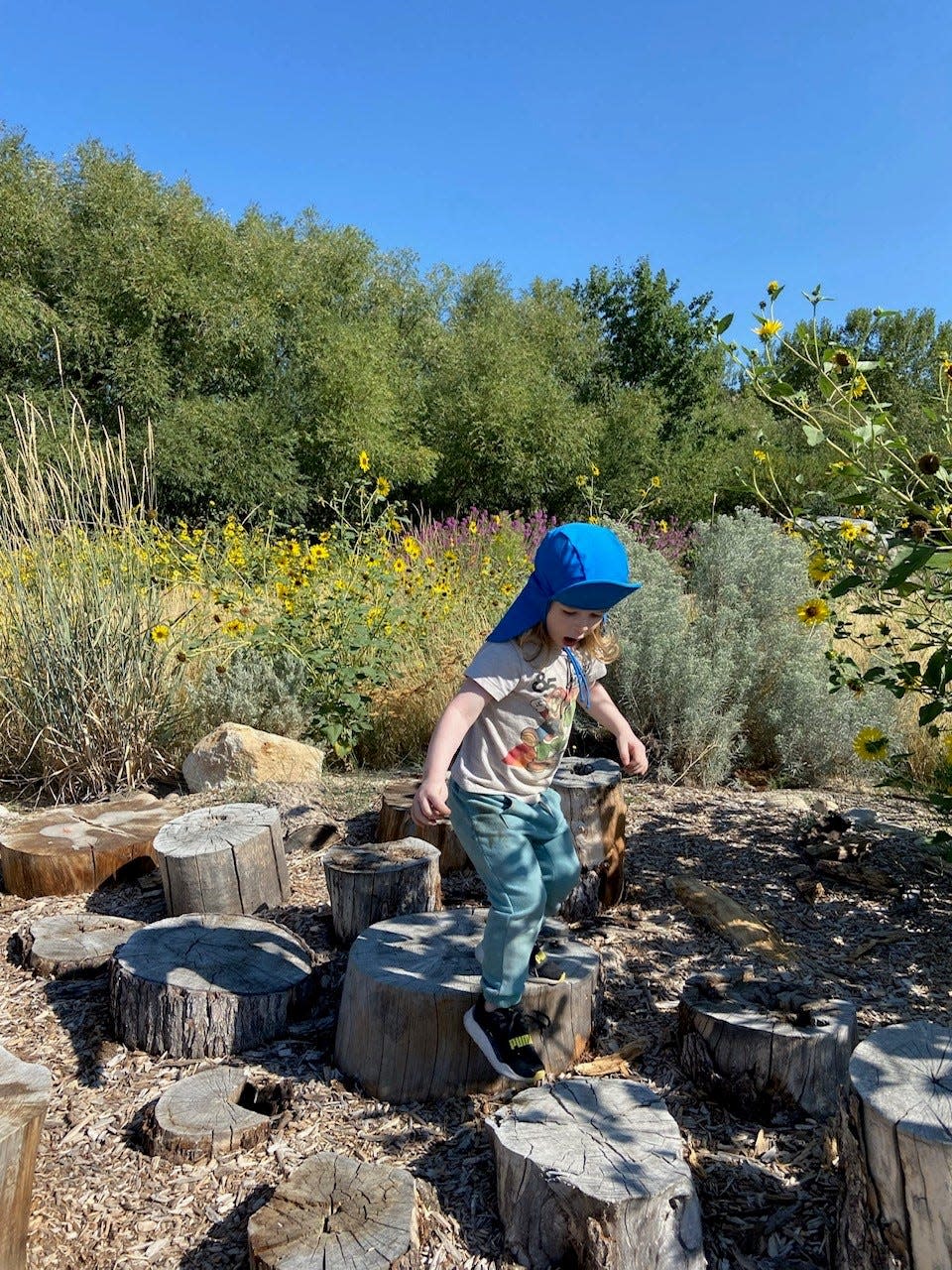Inflation's wrath hits home: Families struggle to cope amid surging child care costs
Less than three months after Hannah Sharp enrolled her 2-year-old son at a day care center in Boise, Idaho, he tested positive for COVID-19.
The toddler, Emerson, had been exposed to the virus at the small, family-run center by an unvaccinated teacher. Thankfully, the symptoms were mild, and he recovered quickly.
But Sharp did not want to go back to the same center. When she desperately began calling other day care facilities in the area, she was put on monthslong waitlists. And the costs had skyrocketed.
“I was paying $700 per month. When I started looking, the cheapest I found was $950 and the expensive ones were upwards of $1,200. I couldn’t afford that,” says Sharp, who works in nonprofit communications. “The price has just been going up because of the housing growth in our area. There's huge demand and very, very, very little supply.”

The rising U.S. inflation rate, which hit a three-decade high in October, up by 6.2% from a year ago, has consumers paying more for everything from rent, energy, and food.
►Inflation: Increase in prices for gas, food, energy raise concern
►Thanksgiving dinner: How are inflation and higher grocery prices affecting your holiday meal?
While the pandemic-fueled worker shortage has affected all industries, the child care sector, which lost 36% of its workforce as centers closed due to low enrollment, has been struggling to get workers back.
About 80% of the child care providers reported experiencing staffing shortages in a June survey conducted by the National Association for the Education of Young Children. In Idaho, 91% of the centers reported worker shortages.
The national median hourly wage for child care workers – $12.24 in May 2020, according to the Bureau of Labor Statistics – hasn’t helped either.
“In Idaho, the average wage of a child care provider is about $10 an hour,” says Beth Oppenheimer, executive director of the Idaho Association for the Education of Young Children. “People just don’t show up when they find out how much they’ll be paid. They can go over to a Walmart or the hamburger joint and make $3 to $4 more an hour.”

Nationally, the average price of a one-bedroom apartment increased by 20% between September 2020 and September 2021, according to Apartment Guide’s annual rent report. During the same time, rent in Boise were up by 49%.
“With the state’s average child care wages, people simply cannot afford housing," says Oppenheimer.
As centers look to fill the slots with more competitive wages and raising costs by 15% to 20%, families are feeling the crunch.
Even though the average early childhood educator makes only slightly more than $12 an hour, personnel expenses account for approximately 70% of a child care provider’s total budget, according to the Center for American Progress.
“For years and years, families have already struggled to pay for the cost of child care,” says Oppenheimer. “Now child care providers cannot compete with wages without raising their rates and a lot of families can't afford it.”
And it’s not just the wages that are pushing the costs up.
“The cost of food is going up, cleaning supplies are more expensive and we are trying to find ways to compensate teachers who are not paid their value,” says Dawn Meyerski, executive director of the Mount Kisco Child Care Center in Mount Kisco, New York.
While Meyerski hasn’t raised the cost of care yet, she said it was “likely” she would be charging more in September.
Center-based child care costs went up 41% year-over-year, according to a report from LendingTree, which analyzed data from a September 2020 report from the Center for American Progress and Child Care Aware of America. That translates to $14,117 per child compared to $9,977 before the pandemic.
In Georgia, for example, the annual cost of child care went up from $6,568 to $14,121.
Center-based child care providers in both Georgia and Florida saw the annual costs for children ages 3 and 4 increase by a whopping 159%.
Atlanta resident Jameia Thomas, who worked as a janitor last year, said she took her 2-year-old out of a day care program when she decided to start her own business as a spiritual adviser.
She was paying $200 a week at her old day care. A few months ago, when she tried reenrolling her son in day care after she resumed working part time as a janitor, none of the facilities would take her son for under $350 a week.
"I can't afford it. I have to depend on my family to help me," she says.
Meanwhile, Sharp, the Boise resident finally found a Montessori school for her now 3-year-old son in August.
"I was asking everyone I knew and posting online, like begging for help and recommendations and I got a suggestion online on Twitter about this school," she says.

At $1,000, the price was steep and more than she could afford but luckily for her, the child care tax credit check in July came just in time.
"There's no way I could afford it without that," she says. "My son had some speech delays and being in a learning environment, I can see rapid growth and vocabulary skills in the couple of months that he's been there and it has been so wonderful."
Swapna Venugopal Ramaswamy is the housing and economy reporter for USA TODAY. Follow her on Twitter @SwapnaVenugopal
This article originally appeared on USA TODAY: Inflation impacting child care costs over rising wages, price of goods

 Yahoo Movies
Yahoo Movies 
